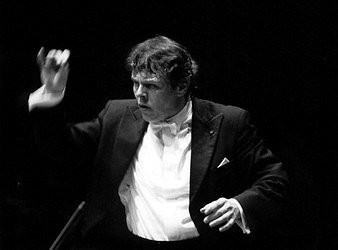S & H Concert Review
Mendelssohn, Schumann, Mussorgsky /Ravel; Wiener Philharmoniker, Mariss Jansons, RFH, 17th December 2003 (AR)
As part of the Classic international 2003/4 series, this Wiener Philharmoniker concert opened with Mendelssohn’s rarely played Ruy Blas Overture, the last of the five mature overtures he wrote. If the work is uneven and uninspired the Wiener Philharmoniker, which has a long established affinity with this composer, played it with great affection and sensitivity; Jansons himself conducted with energetic flare, coaxing the divided strings to play with great refinement and verve.The opening Sostenuto assai of Robert Schumann’s Symphony No.2 in C was taken at a rather slick pace, negating any sense of unfolding mystery. Brass were, on occasion, bland, lacking the sense of foreboding and gloom required of them and although the allegro section was incisively conducted there was still no real sense of underlying tension. The Scherzo, taken at an ideally rapid pace, was rhythmically taut with the cellos’ especially playing with expressive warmth: the divided strings seemed to allow the cellos’ and the double basses to come through with more impact than usual.
Yet, despite that expressive ‘cello playing, the phrasing of the violins in the Adagio was slack; here, Jansons failed to conjure up the sense of tenderness and poetry that made Celibidache’s memorable account with the LSO (at the RFH) so magical and moving. The concluding Allegro molto vivace was a combination of athleticism and streamlined sterility; even the crisply played timpani strokes sounded anodyne. Whilst the playing was pristine and polished throughout there was something lacking - a sense of tension, poetry and danger that a ‘live’ performance should give; Janson’s preference seemed to be for a contrived, almost mechanical delivery.
Pictures at an Exhibition is not a work I particularly associate with the Wiener Philharmoniker but their playing of this popular score was both exemplary and exciting. Under Jansons’ penetrating direction the score was not treated as a flashy showpiece for orchestra (as it often the case) but as a series of subtle, contrasting vignettes. Jansons added his own ‘touched up’ – but subtle - percussive emendations which gave Ravel’s orchestration greater bite, notably in the use of the gong. His refreshing reading was transparent and delicate, almost chamber-like, with many orchestral details which are normally blurred shining through. The opening promenade, for example, had weight and grandeur, taken at an ideal ambulatory pace. Gnome had an extraordinarily brittle dissonance to it with brass and percussion both roughly textured and richly dark while A Medieval Castle was solemn, concentrated and broad. If the Ballet of the Unhatched Chicks sounded too pristine, despite rhythmically taut conducting, the brass in Catacombs conjured up an air of sonorous majesty and glowing luminosity. The Gate of Kiev – mercifully uncongested - was majestically played closing an intoxicating performance.
The two encores were an impassioned Pas de deux from Tchaikovsky’s Casse Noisette and a rousing account of Johann Strauss II’s Persian March.
Alex Russell

 Return to:
Return to: